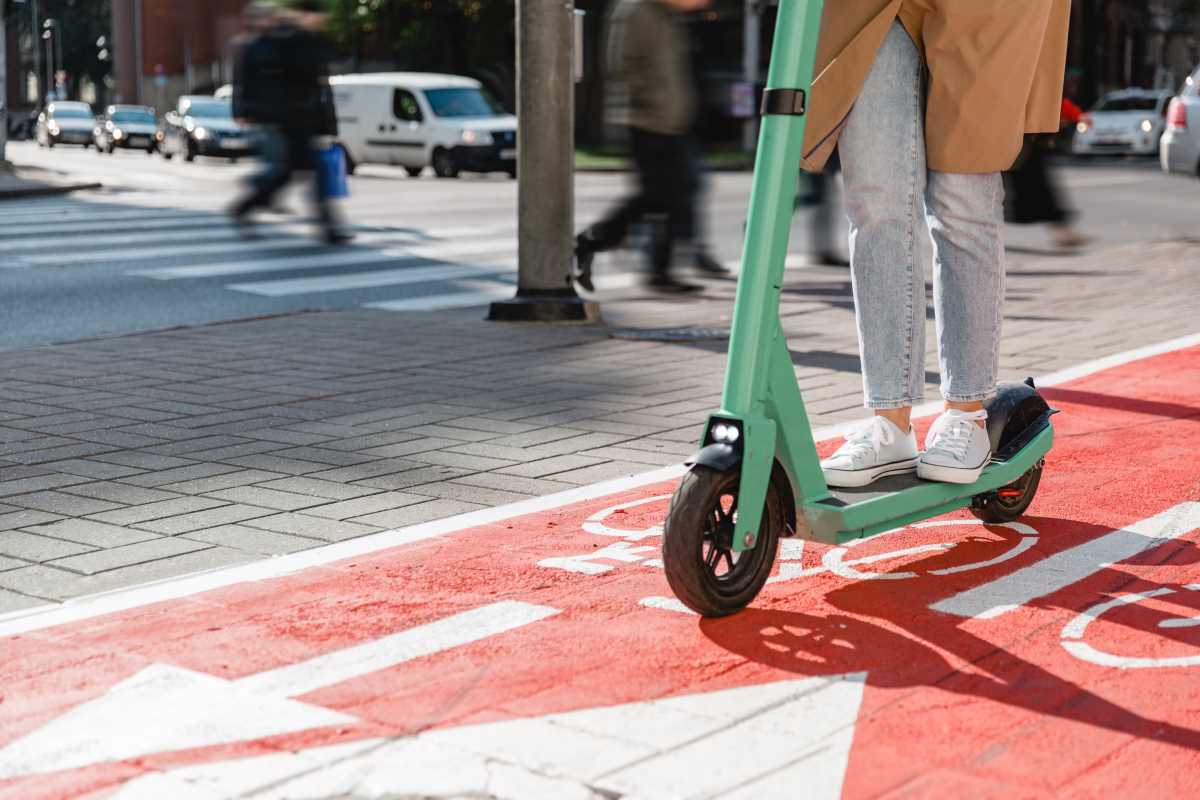In recent years, electric scooters have emerged as a popular, eco-friendly, and convenient alternative for daily commuting. With growing concerns about traffic congestion, environmental sustainability, and the rising costs of traditional transportation, more people are turning to electric scooters as an efficient way to travel short distances. These compact, zero-emission vehicles are not only transforming how people move around urban environments but also reshaping the future of transportation. This article explores how electric scooters are revolutionizing daily commutes, the benefits they offer, and the challenges that come with their widespread adoption.
The Rise of Electric Scooters
Electric scooters have quickly become a common sight in cities around the world. Initially introduced as a fun and affordable mode of transportation, they have evolved into a practical solution for urban commuters. With advances in battery technology, improved designs, and the integration of apps that make renting and sharing scooters easier, electric scooters are now seen as a viable transportation option for individuals looking to reduce their reliance on cars. The surge in popularity can be attributed to several factors:
- The increasing cost of fuel and maintenance associated with owning a car.
- Concerns about environmental sustainability and the desire to reduce carbon footprints.
- Traffic congestion in cities, making short car commutes inefficient.
- Convenience and flexibility offered by electric scooters, especially for last-mile connectivity.
Many major cities, such as San Francisco, London, and Paris, have introduced scooter-sharing programs, allowing users to rent scooters for short trips. The growing availability of these services has made it easier for individuals to switch to electric scooters for their daily commutes.
Environmental Impact
Electric scooters are seen as a sustainable alternative to traditional modes of transportation, especially for short-distance travel. Unlike cars and motorcycles, electric scooters do not produce any tailpipe emissions, helping to reduce air pollution in urban areas. As concerns about climate change and environmental degradation continue to rise, many people are turning to electric scooters as a way to reduce their carbon footprint and contribute to cleaner, greener cities. The environmental benefits of electric scooters include:
- Zero Emissions: Electric scooters are powered by rechargeable batteries, producing no direct emissions.
- Reduced Traffic Congestion: Electric scooters help reduce the number of vehicles on the streets by taking cars off the road, leading to less traffic congestion and lower levels of air pollution.
- Energy Efficiency: Electric scooters are more energy-efficient than cars, requiring significantly more energy to travel the same distance.
Governments and environmental organizations are increasingly supporting the adoption of electric scooters through initiatives such as subsidies, incentives, and infrastructure development. For example, cities like Amsterdam and Berlin have set ambitious goals to reduce their carbon emissions and are incorporating electric scooters into their transportation networks to achieve these targets.
Cost-Effectiveness
For individuals living in urban environments, electric scooters offer a cost-effective alternative to owning and maintaining a car. Traditional car ownership involves expenses such as gas, insurance, parking fees, and regular maintenance, all of which can add up to significant amounts over time. In contrast, electric scooters have much lower operating costs, making them an attractive option for those looking to save money. Key cost advantages of electric scooters are:
- Lower Initial Investment: Electric scooters are generally much cheaper than cars or motorcycles, with prices ranging from a few hundred to a couple thousand dollars, depending on the brand and model.
- Affordable Operating Costs: The cost of charging an electric scooter is a fraction of the price of fueling a car, and maintenance costs are also significantly lower due to fewer moving parts.
- No Parking Fees: Electric scooters can be parked virtually anywhere, eliminating the need for costly parking garages or metered parking.
The cost of monthly transit passes can also add up for commuters who rely on public transportation. Electric scooters provide an affordable alternative for those who need to travel short distances and do not want to commit to the cost of public transport or car ownership.
Time-Saving and Convenience
One of the most attractive features of electric scooters is the time they save. Commuting by car or public transport can be time-consuming, especially during peak hours when traffic is heavy. Electric scooters, however, offer a faster and more efficient option for getting around, particularly for short trips within urban areas. Benefits of time-saving with electric scooters include:
- Bypassing Traffic: Electric scooters can easily navigate through traffic, allowing riders to bypass congestion and reach their destinations faster. This is especially useful for last-mile commutes or for getting to public transportation hubs.
- Flexible Routes: Scooters can be used on bike lanes, sidewalks, and other paths not accessible to cars, giving riders more flexibility in how they travel.
- Quick Charging: Many electric scooters can be charged in a few hours, and some models offer fast-charging options, making them convenient for daily use.
For those who need to get to work, school, or appointments quickly, electric scooters provide a reliable and efficient way to travel without the delays that often come with traditional commuting methods.
Accessibility and Health Benefits
Electric scooters are also more accessible compared to other forms of transportation. They are ideal for individuals who may not have access to a car or who want an easy, efficient mode of transport for short distances. They are especially useful in cities with limited public transportation options or for those who need to avoid the hassle of parking. In addition to accessibility, electric scooters offer several health benefits:
- Physical Activity: While motors power electric scooters, riders still engage in some physical activity. Balancing, steering, and occasionally pushing the scooter can provide light exercise, especially for short trips.
- Reduced Stress: Commuting by car or public transport can be stressful, particularly in crowded environments or during rush hour. Riding an electric scooter provides a more relaxing and enjoyable experience, helping to reduce stress levels.
Electric scooters also allow individuals to avoid the negative health impacts associated with driving or sitting in traffic for extended periods. By providing a more active and less stressful alternative, electric scooters contribute to a healthier lifestyle.
Challenges to Widespread Adoption
Despite their many benefits, electric scooters face several challenges that could hinder their widespread adoption. While they are ideal for short trips and urban areas, they may not be suitable for all types of commuters or locations. Among the main challenges are:
- Safety Concerns: Electric scooters can be risky to ride, especially in areas with heavy traffic or poorly maintained roads. Accidents and injuries are a concern, particularly for riders who are inexperienced or not wearing helmets.
- Lack of Infrastructure: In many cities, infrastructure for electric scooters—such as dedicated bike lanes or charging stations—is lacking or insufficient. It can be difficult for riders to use scooters safely and efficiently without proper infrastructure.
- Regulations: Many cities have yet to establish clear regulations governing the use of electric scooters. Questions around speed limits, where scooters can be ridden, and rules for parking can create confusion for both riders and city officials.
Addressing these challenges requires collaboration between scooter manufacturers, city planners, and government officials to create safer, more accessible environments for scooter riders. As more cities recognize the benefits of electric scooters, we may see an increase in infrastructure investments and the implementation of regulations that ensure safe and responsible use.
The Future of Electric Scooters
The future of electric scooters looks bright, with ongoing innovations in battery technology, vehicle design, and urban planning. Electric scooters will likely play a key role in reshaping urban mobility as cities become more focused on reducing their carbon footprints and improving transportation efficiency. Several trends are expected to shape the future of electric scooters:
- Integration with Public Transportation: Many cities are working to integrate electric scooters into their existing public transportation networks, offering commuters more options for seamless, multimodal travel.
- Advancements in Battery Technology: As battery technology continues to improve, electric scooters will become more efficient, with longer ranges and shorter charging times.
- Smart Features: Electric scooters may soon be equipped with advanced features such as GPS navigation, anti-theft alarms, and even autonomous capabilities.
With these advancements, electric scooters are likely to become a mainstream mode of transportation, complementing other forms of transit and contributing to the ongoing shift toward sustainable, eco-friendly urban mobility.







